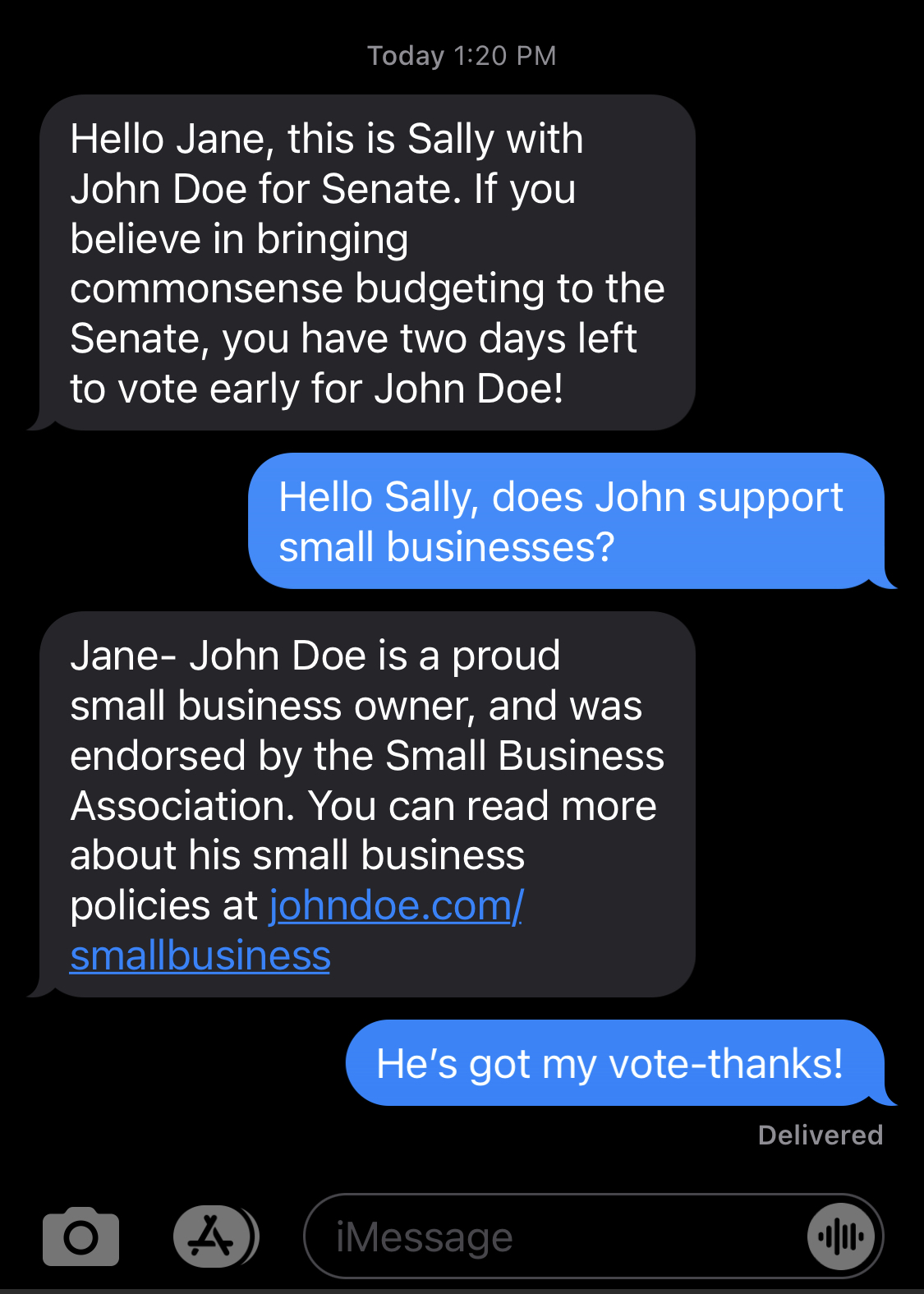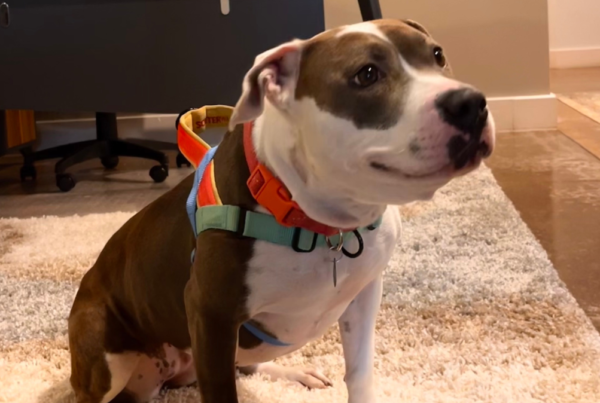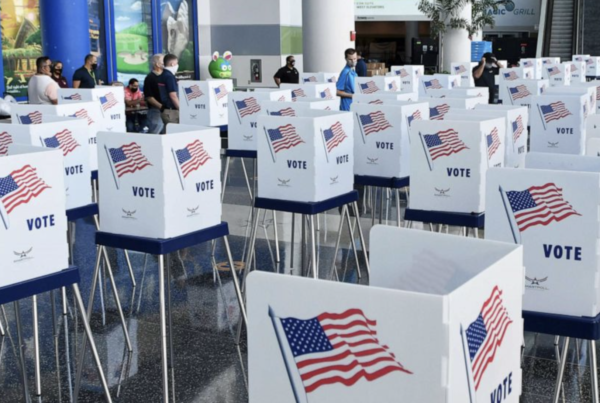It’s that time of year again- election season. Our team is working diligently on numerous texting campaigns for candidates and organizations across the nation. Texting has become an excellent alternative to volunteer and automated phone calls. Today, only 26% of unidentified phone calls are answered by Americans. Texting does not require someone to be available by phone at a specific time, and can be a more comfortable alternative for some people to engage in conversation, especially during the COVID-19 election cycle. Given the affordability of texting, and the ability to include graphics and links in messages, it is not surprising texting is taking over messaging channels in the 2020 election.
Include a graphic or link
Across the board, whether it is social or email or texting, the more visuals the better. Graphics can be a strong value add to a texting campaign. Keep in mind that not everyone has a smartphone, so don’t assume that everyone can see the graphic. Any text or images on the graphic need to be as large as possible- remember most people will be looking at this on a phone screen, so keep it legible and simple.
DO:

DON’T:

Tell the recipient who you are
When people receive texts from an unknown number, oftentimes the first thing they want to know is who the text is from. Without a name attached to a text message, people feel less connected to the message and are more likely to assume it is coming from a bot. Most peer-to-peer texting is done by a person- whether a volunteer, employee or candidate themselves.
DO: Hello Jane, this is Sally with John Doe for Senate. If you believe in bringing commonsense budgeting to the Senate, you have two days left to vote early for John Doe!
DON’T: You have two days left to vote early for John Doe!
Respond!
In our opinion, the best feature of peer-to-peer texting is the ability to respond. On average, peer-to-peer texting reply rates are about 10-20%. The messages for which we see the highest reply rates are those which you provide something to your contact: critical knowledge, time-sensitive info, etc. Source
Keep it concise
Recipients have short attention spans. It’s important to consider what would show up in a message preview. After a brief introduction, get right to the point, the longer the message, the less people will read it in its entirety. If you have many important dates or reminders coming up, consider splitting up the information in different messages rather than trying to send it all at once.
DO: Hello Jane, this is Sally with John Doe for Senate. Have you heard John received an endorsement from the Small Business Association? John is a proud business owner and advocate- can we count on your vote?
DON’T: Hello Jane, this is Sally with John Doe for Senate. John is a small business owner and a proud advocate for the small business community in North Carolina. Recently, he was endorsed by the Small Business Association for his efforts in the Senate. Have you made a plan to vote yet? Early voting ends in ten days, and the general election is only two weeks away! Can we count on your vote?
You don’t always need an excess of words to convey the same message. A general rule for public relations and campaign writing- convey your key points with the least amount of words possible.
CONTACT US
If you are interested in learning more about a comprehensive texting campaign, contact us at [email protected], and let us help you prepare a strong digital messaging plan for your business or organization.







